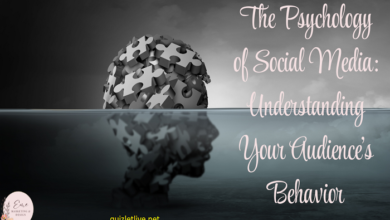ChatGPT: Transforming Communication and Productivity

ChatGPT is an advanced language model developed by OpenAI, designed to facilitate human-like conversations and generate text-based responses. As a remarkable tool in the field of artificial intelligence, ChatGPT has transformed the way we interact with technology. By utilizing deep learning techniques, ChatGPT can understand context, infer meaning, and produce coherent text that closely resembles human communication. Its versatility makes it applicable in numerous domains, from customer support to content creation.
The emergence of ChatGPT has prompted discussions about the implications of AI on communication and productivity. This technology is not just a trend; it represents a significant shift in how we approach information processing and interpersonal interactions. With its capabilities, ChatGPT has become an invaluable resource for individuals and businesses alike, enhancing efficiency and creativity.
The Evolution of ChatGPT
The evolution of ChatGPT is rooted in the progression of natural language processing (NLP) and machine learning. The model builds upon the foundations established by its predecessors, such as GPT-2, incorporating larger datasets and more sophisticated algorithms. This evolution allows ChatGPT to generate more accurate, contextually relevant responses compared to earlier models.
Initially, ChatGPT was designed for simple conversational tasks. However, as its architecture improved, it began to excel in various applications, including writing assistance, educational tools, and interactive entertainment. The continuous improvement of ChatGPT underscores the importance of ongoing research in AI and its potential to enhance human communication.
Furthermore, ChatGPT’s adaptability to different contexts makes it an essential tool across various industries. From providing customer support in retail to assisting in content creation for marketing, the evolution of ChatGPT demonstrates its versatility and effectiveness in meeting diverse communication needs.
How ChatGPT Works
ChatGPT operates on the principles of deep learning, using neural networks to process and generate language. At its core, the model employs a transformer architecture that allows it to analyze and predict text patterns. Through extensive training on diverse datasets, ChatGPT learns to recognize context, grammar, and various writing styles.
When users input text, ChatGPT analyzes the prompt, extracting key information to generate relevant responses. The model considers various factors, including the input context and potential user intent, to produce coherent and contextually appropriate replies. This ability to understand nuances in language is what sets ChatGPT apart from traditional chatbots.
Moreover, ChatGPT is designed to learn from interactions, refining its responses based on user feedback. This iterative learning process enhances its ability to adapt to individual preferences, making it a powerful communication tool. As users engage with ChatGPT, they contribute to its development, enabling the model to become even more effective in delivering personalized interactions.
The Applications of ChatGPT
The applications of ChatGPT span a wide range of industries, demonstrating its versatility and effectiveness. In customer service, businesses use ChatGPT to provide instant responses to inquiries, streamlining the support process and improving customer satisfaction. With its ability to handle multiple queries simultaneously, ChatGPT enhances operational efficiency while reducing the burden on human agents.
In education, ChatGPT serves as a valuable resource for students and educators alike. It can assist with research, provide explanations of complex concepts, and offer writing support. By facilitating personalized learning experiences, ChatGPT empowers learners to engage with material in new and meaningful ways.
Additionally, ChatGPT is making waves in content creation. Writers and marketers leverage the model to generate ideas, draft articles, and even optimize SEO strategies. This capability not only saves time but also enhances creativity by providing fresh perspectives and suggestions.
The adaptability of ChatGPT extends to various other fields, including healthcare, gaming, and programming. By understanding and generating human-like responses, ChatGPT is reshaping how we approach tasks, solve problems, and communicate effectively in diverse contexts.
ChatGPT in Customer Service
ChatGPT is revolutionizing the customer service landscape by offering quick, reliable, and consistent support. Companies increasingly turn to this AI-powered solution to enhance their customer interactions. By integrating ChatGPT into their customer service channels, businesses can provide 24/7 support, ensuring that customers receive timely assistance, regardless of the time or day.
The model’s ability to handle common inquiries, such as product information, order status, and troubleshooting, allows human agents to focus on more complex issues that require a personal touch. This synergy between ChatGPT and human agents leads to improved efficiency and customer satisfaction.
Moreover, ChatGPT’s natural language processing capabilities enable it to understand customer sentiments, allowing it to respond appropriately based on the emotional context of the conversation. This level of understanding fosters a more empathetic interaction, enhancing the overall customer experience.
As businesses continue to adopt ChatGPT for customer service, they can expect improved response times, reduced operational costs, and higher customer loyalty. The integration of ChatGPT into customer service represents a significant step forward in leveraging technology to meet evolving consumer expectations.
ChatGPT in Education
In the education sector, ChatGPT is emerging as a powerful tool for both teachers and students. Its ability to provide instant feedback and explanations makes it an invaluable resource for personalized learning experiences. Students can interact with ChatGPT to clarify doubts, explore new concepts, and enhance their understanding of various subjects.
Educators can also benefit from ChatGPT by using it to develop lesson plans, generate quiz questions, and curate educational content. By automating routine tasks, teachers can focus on fostering meaningful interactions with their students, promoting engagement and creativity in the classroom.
Furthermore, ChatGPT can support language learning by offering real-time translation and conversational practice. Students can engage in dialogues with ChatGPT to improve their language skills, making learning more interactive and enjoyable.
The integration of ChatGPT into educational settings can help bridge gaps in understanding, catering to diverse learning styles and paces. As educators explore innovative ways to incorporate AI into their teaching methodologies, ChatGPT stands out as a valuable partner in enhancing the learning experience.
ChatGPT in Content Creation
The content creation landscape is being transformed by ChatGPT, which offers writers, marketers, and creators a powerful ally in generating ideas and producing high-quality content. With its ability to understand context and style, ChatGPT assists in drafting articles, blog posts, and marketing materials, allowing creators to streamline their workflow and enhance productivity.
One of the most significant advantages of using ChatGPT in content creation is its capacity to provide inspiration. Writers can utilize the model to brainstorm ideas, develop outlines, and explore various angles for their content. This collaborative approach fosters creativity and encourages exploration, ultimately leading to more engaging and diverse content.
Moreover, ChatGPT can optimize content for search engines by suggesting relevant keywords and phrases, helping creators improve their online visibility. By leveraging this AI-driven support, content creators can stay ahead of trends and meet the demands of their audience.
As the digital landscape continues to evolve, incorporating ChatGPT into content creation processes will enable creators to produce high-quality, relevant content efficiently, ultimately enhancing their reach and impact in an increasingly competitive environment.
The Ethical Considerations of ChatGPT
While ChatGPT offers numerous benefits, it also raises important ethical considerations that must be addressed. One significant concern is the potential for misinformation. As an AI model, ChatGPT generates responses based on the data it has been trained on, which can sometimes lead to inaccuracies or the dissemination of false information. Ensuring the accuracy of the information provided by ChatGPT is crucial, especially in sensitive areas like healthcare, finance, and education.
Another ethical consideration is the issue of bias. ChatGPT learns from vast datasets, which may contain inherent biases. As a result, the model may inadvertently produce biased or offensive responses. Addressing this concern requires ongoing monitoring and refinement of the model to minimize biases and ensure that it serves all users fairly and equitably.
Additionally, there are concerns about privacy and data security. As ChatGPT interacts with users, it collects and processes data, raising questions about how that information is stored, used, and protected. Developing robust privacy policies and security measures is essential to maintaining user trust and ensuring compliance with relevant regulations.
By acknowledging and addressing these ethical considerations, developers and users can work together to harness the benefits of ChatGPT while minimizing potential risks, creating a responsible and sustainable AI ecosystem.
ChatGPT and the Future of Work
The advent of ChatGPT is reshaping the future of work across various industries. As businesses increasingly adopt AI-driven solutions, the nature of work is evolving, requiring employees to adapt to new roles and responsibilities. ChatGPT is poised to complement human efforts rather than replace them, allowing for a more collaborative approach to problem-solving and decision-making.
One of the most significant impacts of ChatGPT on the workplace is the enhancement of productivity. By automating routine tasks, such as data entry, scheduling, and customer inquiries, employees can focus on more strategic initiatives that require critical thinking and creativity. This shift not only increases efficiency but also empowers workers to engage in more meaningful and fulfilling work.
Moreover, ChatGPT is fostering a culture of continuous learning in the workplace. Employees can use the model to access information, learn new skills, and seek support for their tasks. This access to resources promotes a growth mindset, encouraging individuals to embrace innovation and adapt to the changing demands of their roles.
As organizations continue to integrate ChatGPT into their operations, the future of work will increasingly revolve around collaboration between humans and AI, resulting in enhanced productivity, innovation, and job satisfaction.
The Global Reach of ChatGPT
ChatGPT’s global reach is a testament to its versatility and applicability across diverse cultures and languages. As organizations and individuals worldwide adopt this technology, it fosters cross-cultural communication and collaboration, breaking down language barriers and facilitating understanding among people from different backgrounds.
The multilingual capabilities of ChatGPT enable it to interact with users in various languages, making it accessible to a broader audience. This feature is particularly valuable in today’s globalized world, where effective communication is essential for success in business, education, and social interactions.
Furthermore, the global reach of ChatGPT extends beyond language to include cultural nuances. By understanding and generating text that reflects different cultural contexts, ChatGPT can engage users more effectively, promoting inclusivity and respect for diversity.
As ChatGPT continues to gain traction globally, its ability to foster cross-cultural connections and enhance communication will play a crucial role in shaping our increasingly interconnected world.
The Challenges and Limitations of ChatGPT
Despite its many advantages, ChatGPT faces several challenges and limitations that users should be aware of. One of the primary challenges is the inherent uncertainty in generating responses. While ChatGPT can produce coherent and contextually relevant text, it may also provide inaccurate or nonsensical answers, particularly when confronted with ambiguous prompts. Users must exercise critical thinking and discernment when interpreting the model’s outputs.
Another limitation of ChatGPT is its dependency on the data it has been trained on. If the training data lacks diversity or comprehensiveness, the model’s responses may reflect those gaps. This can lead to biases, stereotypes, or an inability to address specific topics adequately.
Additionally, the absence of real-time information is a notable constraint. ChatGPT’s knowledge is based on the data available up to a certain point, meaning it may not be aware of recent developments or current events. Users seeking up-to-date information should consult other reliable sources.
By understanding these challenges and limitations, users can leverage ChatGPT more effectively while remaining mindful of its constraints and ensuring that their interactions are grounded in critical analysis.
Conclusion
ChatGPT represents a groundbreaking advancement in artificial intelligence, transforming communication, productivity, and our approach to information processing. Its ability to engage in human-like conversations, provide valuable insights, and automate routine tasks makes it an indispensable tool across various industries. As we explore the applications, challenges, and ethical considerations surrounding ChatGPT, it becomes clear that this technology is not just a trend but a significant shift in how we interact with the world.
By embracing the potential of ChatGPT while addressing its limitations and ethical concerns, we can harness its capabilities to enhance our communication, foster creativity, and improve efficiency. The future of AI-powered communication holds immense promise, and ChatGPT is at the forefront of this revolution, paving the way for a more connected and productive world.




